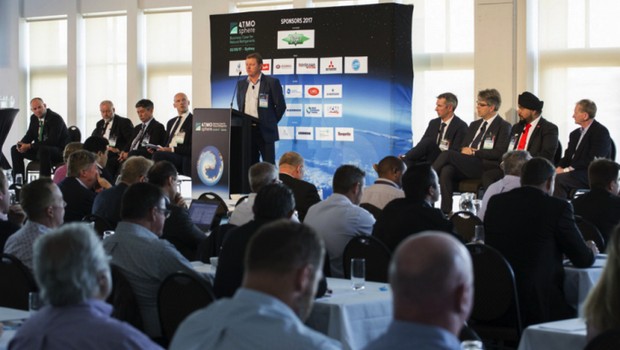Leading OEMs discuss growing diversity in CO2 applications

CO2 is increasingly making inroads in industrial applications, according to industry experts attending ATMOsphere Australia 2017, held last week in Sydney, Australia.
CO2-based HVAC&R solutions are increasingly making inroads into industrial applications, according to industry experts attending ATMOsphere Australia 2017, held last week in Sydney, Australia.
Signalling an increasingly broad set of applications for CO2 around the world, participants in the market trends session at the Luna Park venue discussed CO2 in industrial food processing, cold stores, heat pumps, and chillers.
CO2 use growing in industrial, heat pump applications
Jan Dusek – managing director, shecco Japan and business development manager, shecco APAC – provided a global overview of the continued growth of CO2 in industrial applications.
“There is a revolution underway in industrial refrigeration. We are seeing transcritical CO2 being used more and more in the industrial sector around the world,” said Dusek.
“By now, there is an estimated 100+ systems based on NH3/CO2 in China and it is a clear trend that is supported by the Chinese government.”
Dusek also highlighted the world’s biggest CO2 industrial plant in the Netherlands.
“This 3.36 MW plant with 45 compressors demonstrates the scalability of transcritical CO2 technology.”
Peter O’Neill, sales and marketing manager at Mayekawa Australia, discussed Mayekawa’s NH3/CO2 chillers and proudly boasted of their “more than 1,000 NewTon packages installed worldwide for industrial applications”.
Leading suppliers Bitzer and Danfoss highlighted the impressive growth they’ve seen in terms of CO2 compressor and component sales.
Bitzer announced the recent launch of their new ECOLINE+ series of CO2 compressors and emphasised continued growth in sales of CO2 compressors.
“Bitzer global sales of CO2 compressors continue to increase year over year,” said Ian Suffield, enginnering manager – compressor systems, BITZER Australia.
Inderpal Saund, food retail business development manager at Danfoss, was enthusiastic about the number of their ejectors for use in transcritical CO2 systems currently in use worldwide: “We’ve got over 160 ejectors running globally. I think that’s pretty impressive.”
Also in attendance was Mitsubishi Heavy Industries, whose Q-ton air-to-water heat pump utilises CO2 as the refrigerant.
Trent Miller, hot water heat pump sales executive at Mitsubishi Heavy Industries, provided examples of the Q-ton’s installation in different locations around the world including in warm climates such as Spain.
“Just to prove that CO2 is able to heat hot water in locations close to the equator, we have two [Q-ton] units picking up the load for a 200-room hotel in Spain.”
Training and awareness remain biggest challenges
Regarding the challenges still faced by the industry in Australia, the presenters agreed that proper training and awareness are still lacking but are starting to show signs of improvement.
Brian Rees, group technical manager at Hussmann Oceania, identified training as one of the most important factors for continued CO2 uptake and noted that natural refrigerant systems offer an exciting opportunity for technicians to revitalise their skillsets.
“Training was the thing we did a lot of in the beginning. We still do, but what we’re finding now is that the training is more one on one mentoring and with the equipment itself on-site,” said Rees.
“We also see that some of the technicians who have been in the industry for a long time are getting excited again by working on [systems] that are reliable, well-built, and makes them proud.”
